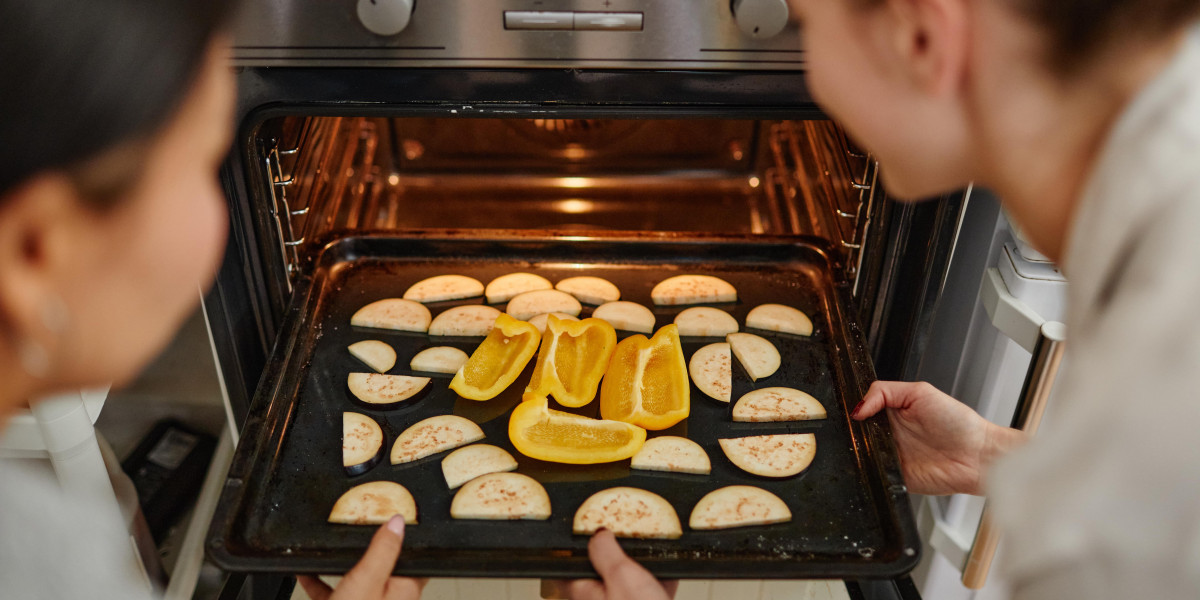The Rise of Integrated Cookers and Hobs: A Comprehensive Guide
In the modern kitchen, effectiveness, design, and space optimization are crucial factors to consider for house owners and striving chefs alike. Among the most significant patterns in kitchen design is the increasing appeal of integrated cookers and hobs. These appliances not just improve the cooking experience however likewise elevate the visual appeals of the kitchen space. This short article explores the qualities, advantages, functions, and considerations surrounding integrated cookers and hobs, providing readers with a detailed understanding of their advantages.
What Are Integrated Cookers and Hobs?
Integrated cookers and hobs refer to cooking appliances that are built in electric oven into the kitchen cabinetry, supplying a smooth look and optimizing making use of space. Integrated appliances are created to blend with the visual of the kitchen rather than standing apart like standard models.

Types of Integrated Cookers and Hobs
Generally, integrated cooking appliances include:
- best Integrated cooker Hobs: These are cooktops that fit flush into the kitchen countertop. They can be gas, electric, induction, or a mix of these technologies.
- Integrated Ovens: Built directly into the cabinets, integrated ovens can come as single, double, or multifunctional designs, offering diverse cooking abilities.
- Combination Units: Some models integrate an oven and hob into a single home appliance, providing a compact solution for smaller sized kitchen areas.
Advantages of Integrated Cookers and Hobs
1. Area Optimization
Integrated cookers and hobs are perfect for little kitchen areas. By embedding the cooking appliances into cabinets, property owners can use their kitchen space more effectively, leaving more room for meal preparation and movement.
2. Aesthetic Appeal
These appliances provide a streamlined and contemporary seek to the kitchen. The capability to choose surfaces and integrate them into the surrounding cabinets produces a unified design that improves the general look of the kitchen.
3. Improved Functionality
Integrated cookers and hobs often come with sophisticated innovation features, such as clever controls, timers, and cooking presets, improving user experience and allowing effective cooking.
4. Boosted Safety
Numerous integrated hobs feature safety steps such as child locks and automatic shut-off functions. This makes them safer than standard freestanding models, particularly in families with kids.
5. Increased Resale Value
Modern homes with integrated appliances typically attract greater resale values. Prospective buyers look for streamlined designs and modern-day conveniences, making integrated cooks and hobs a wise investment.
Features to Consider When Choosing Integrated Cookers and Hobs
When choosing integrated cookers and hobs, several functions need to be considered:
1. Cooking Technology
- Induction: Provides quick and effective cooking, easy to tidy, and gives accurate temperature level control.
- Gas: Offers conventional cooking advantages with immediate heat however requires appropriate ventilation.
- Electric: Provides constant heat and is readily available in different styles.
2. Size and Configuration
- Oven Capacity: Should suffice for the home's cooking needs.
- Hob Size: Depending on the number of burners/vessels required for synchronised cooking.
3. Control Mechanisms
- Touch Controls: Provide a sleek look and ease of cleansing.
- Knob Controls: Offer tactile feedback and are user-friendly.
4. Complete and Style
Integrated cookers and hobs can be found in different finishes, including SA4544CIX Stainless Steel Electric Oven - Buy Now! steel, black glass, and even personalized alternatives to match cabinetry.
5. Energy Efficiency
Choose for energy-efficient models that can minimize energy costs and lower ecological effect.
Upkeep and Care
To keep the performance and longevity of integrated cookers and hobs, regular upkeep is crucial:
- Clean the surface areas: Regularly wipe down the hob and oven surfaces to prevent residue accumulation.
- Examine seals and gaskets: Ensure that oven seals are intact for effective cooking.
- Service routinely: Schedule professional maintenance to keep the appliances in top shape.
FAQs
1. What is the distinction in between built-in and integrated cookers?
Answer: Built-in cookers are created to be installed within kitchen cabinetry, whereas integrated cookers are produced to effortlessly mix with the cabinetry for a more cohesive appearance.
2. Are integrated appliances more costly?
Response: Generally, integrated appliances may have a higher in advance cost compared to freestanding systems due to the fact that of their design and the installation requirements. However, they can use long-lasting savings in energy effectiveness.
3. Can I install integrated cookers and hobs myself?
Response: While some house owners might have the ability to manage the setup themselves, working with a professional is recommended to make sure proper fit and function, especially for gas appliances.
4. Are integrated cookers and hobs easier to clean?
Answer: Integrated hobs usually have fewer crevices, making them easier to clean up. Nevertheless, the particular cleansing requirements will depend on the materials used in the appliance.
5. What should I check before purchasing?
Answer: Check the size of Upgrade Your Kitchen: WILLOW WOF60DSS Single Oven kitchen area, cooking needs, energy performance rankings, and compatibility with existing cabinetry.
Integrated cookers and hobs are becoming significantly favored in contemporary cooking areas, integrating functionality with aesthetic appeal. By comprehending their advantages, features, and maintenance needs, house owners can make educated choices when picking the right appliances for their cooking spaces. As trends in kitchen style continue to progress, integrated cooking solutions will likely stay at the forefront of home development, guaranteeing both practicality and style.



